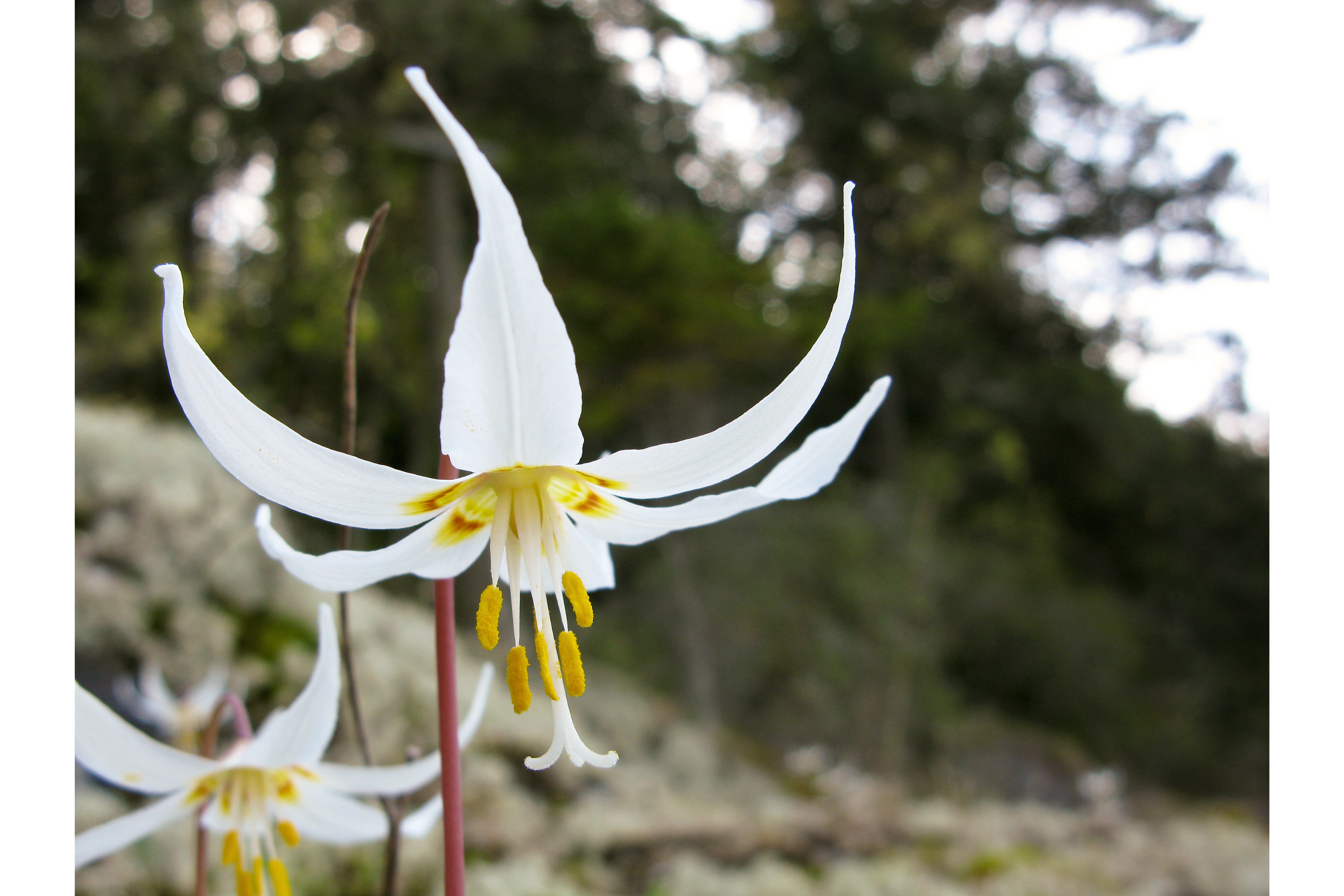Lemon lily
(Erythronium citrinum)

Description
Erythronium citrinum is a beautiful and delicate perennial plant native to the western United States. This plant is a member of the Liliaceae family and is commonly known as lemon lily due to its lemon-yellow flowers. In this article, we will explore the various aspects of Erythronium citrinum, including its taxonomy, morphology, distribution, cultivation, and uses. Taxonomy Erythronium citrinum was first described by Asa Gray in 1874. The species name, citrinum, is derived from the Latin word 'citrinus', which means lemon-yellow. Erythronium citrinum belongs to the genus Erythronium, which comprises of approximately 20 species of perennial plants distributed throughout North America and Eurasia. Morphology Erythronium citrinum is a perennial plant that grows up to 10-30 cm tall. The plant produces a basal rosette of lanceolate leaves, which are up to 15 cm long and 2 cm wide. The leaves have a smooth texture and a slightly wavy margin. The flowers of Erythronium citrinum are large and showy, with six yellow petals that are slightly recurved at the tips. The flowers are held on erect stems that emerge from the center of the basal rosette. The plant blooms in early spring, usually from March to May. Distribution Erythronium citrinum is native to the western United States, where it occurs in California, Oregon, Washington, Idaho, Nevada, and Montana. The plant is commonly found in open woodland and meadow habitats, often growing on moist, well-drained soils. It can be found at elevations ranging from sea level to about 2,400 meters. Lemon lily is well adapted to the Mediterranean climate of California, where it is found in both coastal and inland regions. It is also found in the Pacific Northwest region, where it is found in moist, cool forests. Overall, Erythronium citrinum prefers habitats with a moderate climate and moist soils. Cultivation Erythronium citrinum is a relatively easy plant to cultivate in the garden. The plant prefers a well-drained soil that is rich in organic matter. It grows best in partial shade or filtered sunlight, although it can tolerate full sun in cooler climates. The bulbs of Erythronium citrinum should be planted in the fall, at a depth of 10-15 cm. The plant should be watered regularly during the growing season, but the soil should not be allowed to become waterlogged. Erythronium citrinum can be propagated by dividing the bulbs in the fall, after the foliage has died back. Uses Erythronium citrinum is primarily grown as an ornamental plant in gardens and parks due to its showy, lemon-yellow flowers that bloom in early spring. It is a popular choice for spring displays and can be grown in containers or planted in garden beds. The plant is also sometimes used in landscaping to provide a naturalistic look to woodland gardens or shaded areas. In addition to its ornamental value, the bulbs of Erythronium citrinum are also edible and have been used by native tribes as a source of food. The bulbs can be boiled or roasted, and have a nutty flavor. However, it should be noted that the plant contains alkaloids that can cause gastrointestinal upset if consumed in large quantities, and it is not commonly used as a food source in modern times. Erythronium citrinum also has some medicinal uses. The plant has been used by some Native American tribes to treat coughs, colds, and other respiratory ailments. The bulb of the plant has been used in some traditional medicines as a pain reliever and anti-inflammatory agent. However, it should be noted that the medicinal uses of Erythronium citrinum have not been extensively studied, and it is not widely used in modern medicine. Overall, Erythronium citrinum is primarily grown for its ornamental value, but its bulbs have also been used for food and medicine by some cultures. Conservation Status The conservation status of Erythronium citrinum is of least concern. Although the plant's distribution is limited to the western United States, it is relatively common and is not considered to be at significant risk of extinction. However, like many other native plants, Erythronium citrinum is threatened by habitat loss due to human activities such as logging, agriculture, and urbanization. In addition, the plant is sometimes collected from the wild for use in gardens and landscaping, which can impact wild populations. Therefore, conservation efforts are focused on preserving the plant's natural habitats and promoting the use of cultivated varieties in gardens and landscaping, rather than wild-collected plants. It is important to continue monitoring the population status of Erythronium citrinum to ensure that it remains stable and healthy. Conclusion Erythronium citrinum is a beautiful and delicate perennial plant that is native to the western United States. The plant is commonly known as lemon lily due to its lemon-yellow flowers. Erythronium citrinum is relatively easy to cultivate in the garden, and is primarily grown as an ornamental plant. The plant's bulbs are also edible, but should be consumed in moderation due to the presence of alkaloids. Overall, Erythronium citrinum is a valuable addition to any garden or landscape, and is well worth cultivating for its beauty and cultural significance.
Taxonomic tree:







